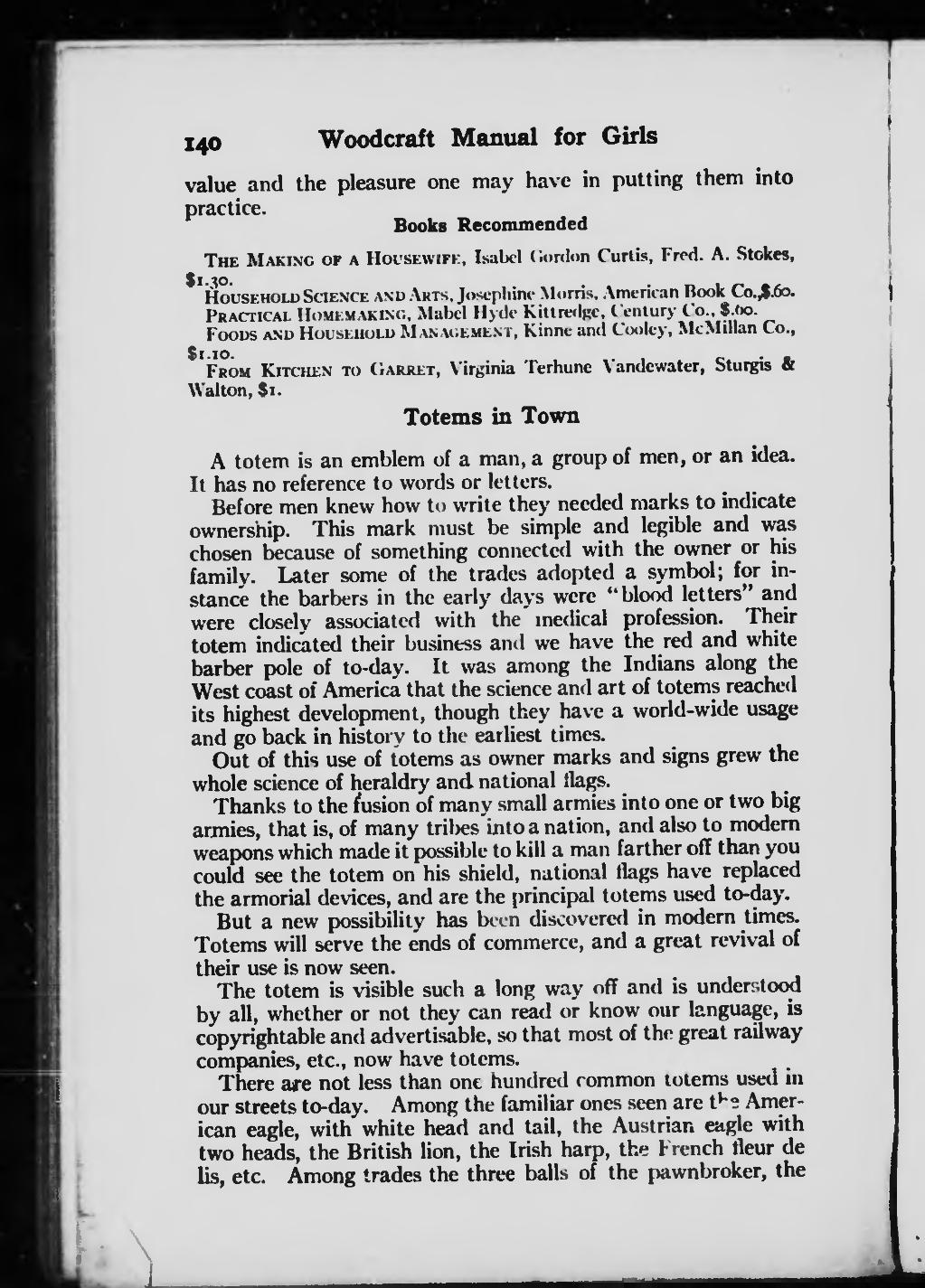Woodcraft Manual for Girls value and the pleasure one may have in putting them into practice. , ^ Books Recommenaed The Makino of a Housewife, Isabel Gordon Curtis, Frfd. A. Stoket, housf.mold Science andAkts, Joscpliim- Morris, American Rook Co.j^fo. Practical Homemaking, Mabel Hyde Kiltredgc, Century Co., $.00. Foods and Household Management, Kinne and Cooley, McMillan Co.,
- 'from Kitchen to Gauset, Virginia Terhune Vandewater, Stuigb k
Walton, $1. Totems in Town A totem is an emblem of a man, a group of men, or an idea. It has no reference to words or letters. Before men knew how to write they needed marks to indicate ownership. This mark must be simple and legible and was chosen because of something connected with the owner or his family. Later some of the trades adopted a symbol; for in- stance the barbers in the early days were "blood letters" and were closely associated with the medical profession. Their totem indicated their business and we have the red and white barber pole of to-day. It was among the Indians along the West coast of America that the science and art of totems readied its highest development, though they have a world-wide usage and go back in history to the earliest times. Out of this use of totems as owner marks and agna grew the whole science of heraldry and national flags. Thanks to the fusion of many small armies into one or two big annies, that is, of many tribes into a nation, and also to modem weapons which made it possible to kill a man farther off than you could see the totem on his shield, national flags have replaced the armorial devices, and are the principal totems used to-day. But a new possibility has been discovered in modem times. Totems will serve the ends of commerce, and a great revival of their use is now seen. The totem is visible such a long way off and is understood by all, whether or not they can read or know our language, is copyi^table and advertisable, so that most of the great railway companies, etc., now have totems. There are not less than one hundred common totems used m our streets to-day. Among the familiar ones seen are t^e Amer- ican eagle, with white head and tail, the Austrian eagle with two heads, the British lion, the Irish harp, the French fleur de lis, etc AjBoaog trades the three baUs oi the pawabrdcer, the
